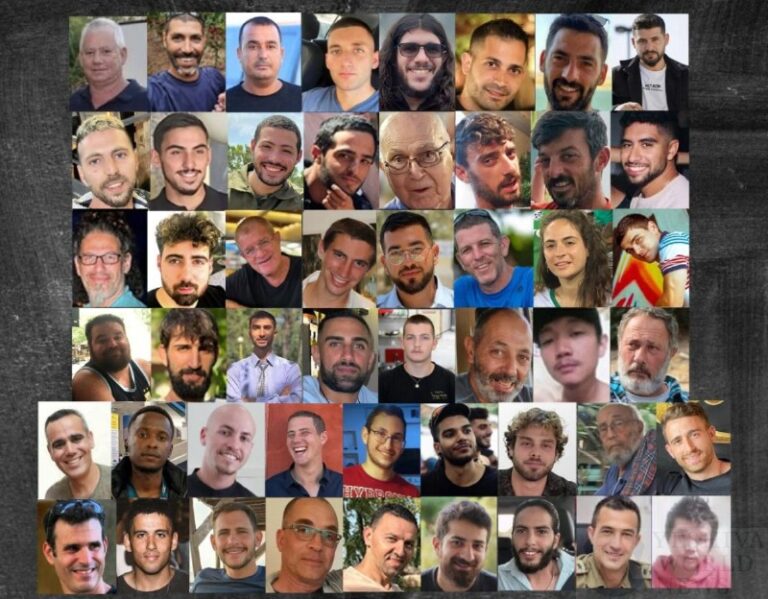The Israeli Democracy Institute released this year’s data pertaining to the chareidi sector in 2019. According to the report, the chareidi tzibur is growing at a brisk pace, is earning more, and still prefers to vacation in Israel.
According to the annual figures compiled by Dr. Lee Kahner and Dr. Gilad Angel; compared with the growth rate of populations in developed countries, the chareidi community’s growth rate is larger, about 4% annually.
The factors of this special rate of growth include high fertility rates, modern medicine and living conditions, young marriage age and the large number of children per family. Indeed, the chareidi population in Israel is very young – close to 60% being under the age of 20, compared to 35% among the general population.
The chareidi population in Israel number 1,125,000 persons, comprising 12% of the Israeli population. Thanks to the young marriage age among men and women in that population, the chareidim have the largest growth rate in the country; 4%, while the growth rate among the general population is 1.9%. As a result, while the general population in Israel and developed nations is aging, the Israeli chareidi population is very young, with half being under the age of 16. If this growth trend continues, the chareidim in Israel will double in size every 16 years.
The number of chareidi talmidei yeshiva and avreichim (including talmidim from abroad) stood at 133,933 in 2018. From 1999-2012 the number of Israeli of talmidei yeshiva and avreichim increased steadily by 4% a year, similar to the growth rate of the chareidim in Israel, in the past four years, 2015-2018, the number of avreichim increased by 30% – from 66,000 in 2014 to 86,000 in 2018.
In those years, the number of talmidei yeshivos grew by 21%, from 30,000 to 37,000. In 2018 alone, the jump in the number of avreichim was 6%, higher than the annual chareidi growth rate, which stands at 4%.
Earning less but are generally more satisfied
From 2015-2018, there was a halt recorded in the growth in the number of chareidi men in the workforce. The rate of employment among chareidi men was 51% in 2018 compared to 87% among non-chareidi Jewish men in Israel. In 2015, their employment rate was 52%.
The trend is different among chareidi women: in 2018, 76% of them worked, compared with only 71% in 2015. The gaps between chareidim and Jewish non-chareidi women are also relatively small. 76% of chareidi women work, compared to 83% of non-chareidi Jewish women.
In 2017, the monthly gross income for a chareidi household stood at NIS 15,015, compared to NIS 22,190 among non-chareidi Jewish households. Although 2017 saw a 10% increase in gross monthly income for a chareidi household, compared to a much smaller increase in non-chareidi Jewish population (5%).
These gaps are especially evident in the incidence of poverty among children. The percentage of chareidi children living below the poverty line is 55%, while the proportion of non-chareidi Jewish population is only 9%. The proportion of children suffering from food insecurity in the chareidi population (26%) is also higher than in the non-chareidi Jewish population (14%). The reasons for this are the high number of children in an average chareidi family, along with a lower average employment rate and wages among chareidi parents. However, in recent years, there has been a significant reduction in the incidence of poverty among chareidi families, and it has dropped from 52% in 2013 to 43% in 2017.
As for expenses – the monthly financial expenditure per capita in the chareidi sector is less than half of the monthly monetary expenditure per capita in the non chareidi Jewish population (NIS 2,135 compared to NIS 4,590), although the average number of persons in the chareidi household is larger. In 2017, for example, a chareidi household spent NIS 14,311 monthly, 18% less than a non-chareidi Jewish household.
The gaps between the two populations; the chareidim and non-chareidi Jews, are also evident in the availability of vehicles (in 2018 -chareidim with 44% and non-chareidi Jews 81%). An area with similarities between the two populations is apartment ownership (chareidim 72% and non-chareidi Jews 74%).
However, the percentage of apartment chareidi apartment owners dropped from 2006-2018 from 79%-72%, whereas in the non-chareidi Jewish population there was no real change in this area during those years.
Chareidim prefer to vacation in Israel, although there is an upward trend in vacationing abroad. In 2017-2018, 54% of chareidim aged 20+ vacationed in Israel compared to 60% among the non-chareidi Jewish population. In contrast, 17% of chareidim 20+ vacationed abroad during these years, compared to 52% among non-chareidi Jews. However, the number of vacationers abroad among the chareidi population increased from 12% in 2013-2014 to 17% in 2017-2018. This is a significant jump over four years and is influenced by factors affecting the entire population such as the ‘open skies’ reform. It is also due to an increase in monthly wages in chareidi households.
Academic studies
In the past decade, there has been a 2.5 fold increase in the number of chareidi men and women studying for a college degree. Overall, the growth rate averaged 12.5% per year. In the academic year 2018/19, some 12,000 chareidi students studied in academic institutions, which constitute only 3.8% of all students studying in Israel this year – 70% of them (about 8,400), chareidi women.
However, in recent years, there has been a slowdown in the number of chareidi students, especially among men. In the past two years, the number of chareidi male students has increased by 9% and the number of chareidi female students by 12%.
What do they study?
Chareidi students in larger numbers study teaching and education (35% as compared to 18% of all students), medical auxiliary professions (12% vs 6%) and business administration (12% vs 10%). This indicates the desire of chareidi students to study practical subjects, and subjects that enable work within the chareidi community. On the other hand, their low attendance in engineering studies (9% vs 21%) is evident due to the lack of appropriate background for these studies, especially among chareidi men.
The report adds there has been an upward trend in recent years regarding the number of chareidim using the internet. The number stood at 28% in 2008-2009, and now, 2017-2018, the number is 60%. Regarding chareidim using computers, that number stands at 49%.
(YWN Israel Desk – Jerusalem)












6 Responses
Very interesting and informative. Some very ipositive trends in terms of lower poverty rates and larger numbers pursuing college and graduate studies so that they can earn a parnassah and greater useage of the internet whereby they can function in a society where nearly all daily tasks are moving online.
This is indeed great news. As the frum world becomes a greater percentage here, the chances are greater that our lifestyle will become part of the norm. And with the increase in antisemitism in the US, UK and France perhaps more frum people will make the move home.
“On the other hand, their low attendance in engineering studies (9% vs 21%) is evident due to the lack of appropriate background for these studies, especially among chareidi men.”
Is there something that can be done to increase these numbers. There is nothing assur about studying math (especially) and science. The Rambam was a great scientist. In fact there are many things named in his honor in E”Y and even chilonim think very highly of him.
calling all students avreichim, is like placing all students in the highest quartile. it is an insult to real avreichim who deserve the title meant for individuals but not all students
Gadolhadorah? Positive? College and internet are two major things the Gedolim regularly remind us to distance ourselves from. How can you call our increase in their usage positive?
Before you reply that I’m using the internet, true. But that’s my nisayon and I’ll take care of it privately. It doesn’t change that you’re advocating for that which God decries!
Yehuda; Whether you like it or not, obtaining a college degree and learning how to use the internet in a responsible manner are realities of modern life, even for a ben torah who wants to support his family. Th frum tzibur needs doctors, lawyers, scientists, etc. and those, in turn, require education and access to information. Basic life needs like banking, travel, purchasing goods and services etc. will soon be accessible only through the internet in the majority of cases. What you reference as your “nisayon” is increasingly a reality of daily life which young Chareidi men and women will have to learn to navigate and as the article notes, more are sucessfully doing so.